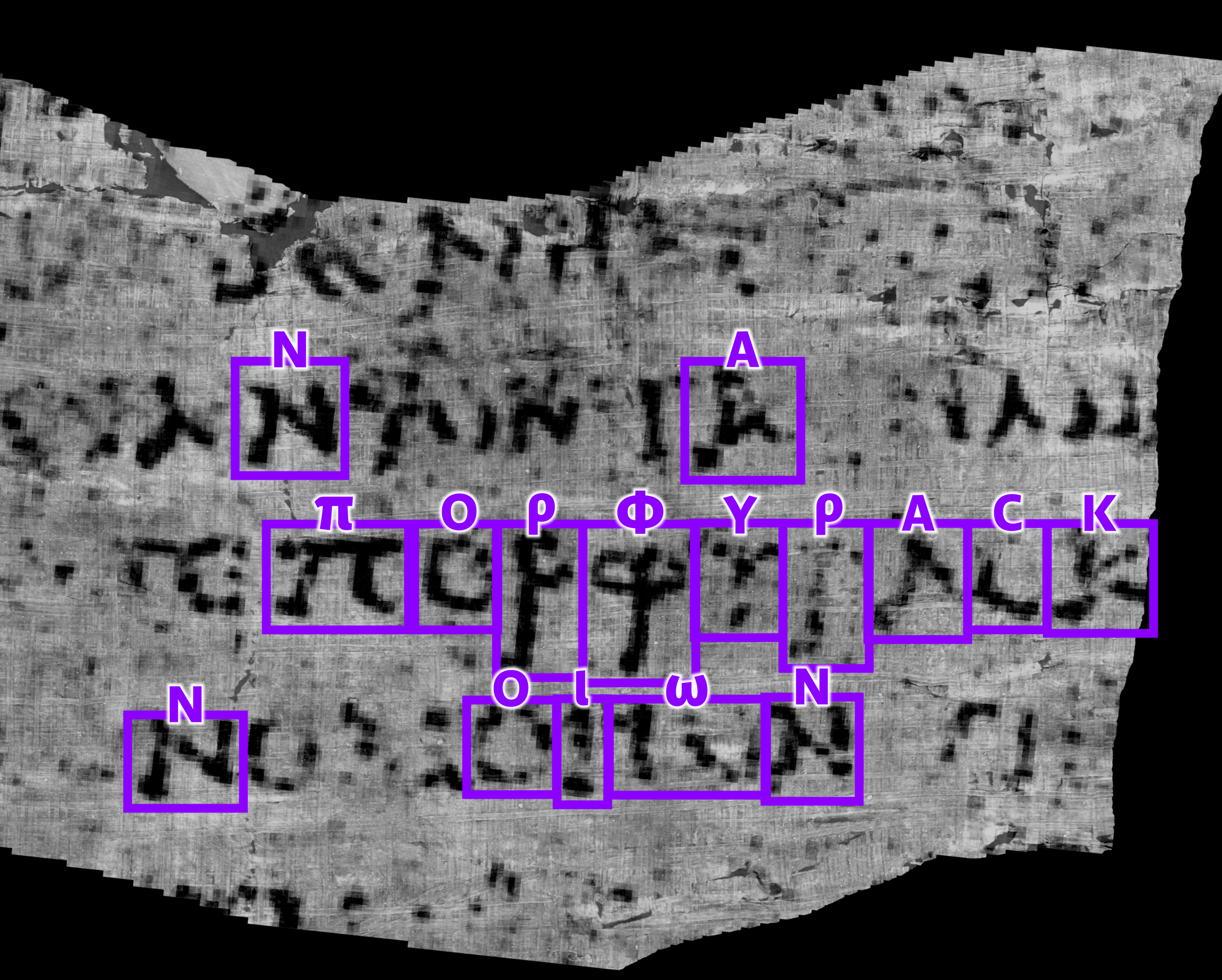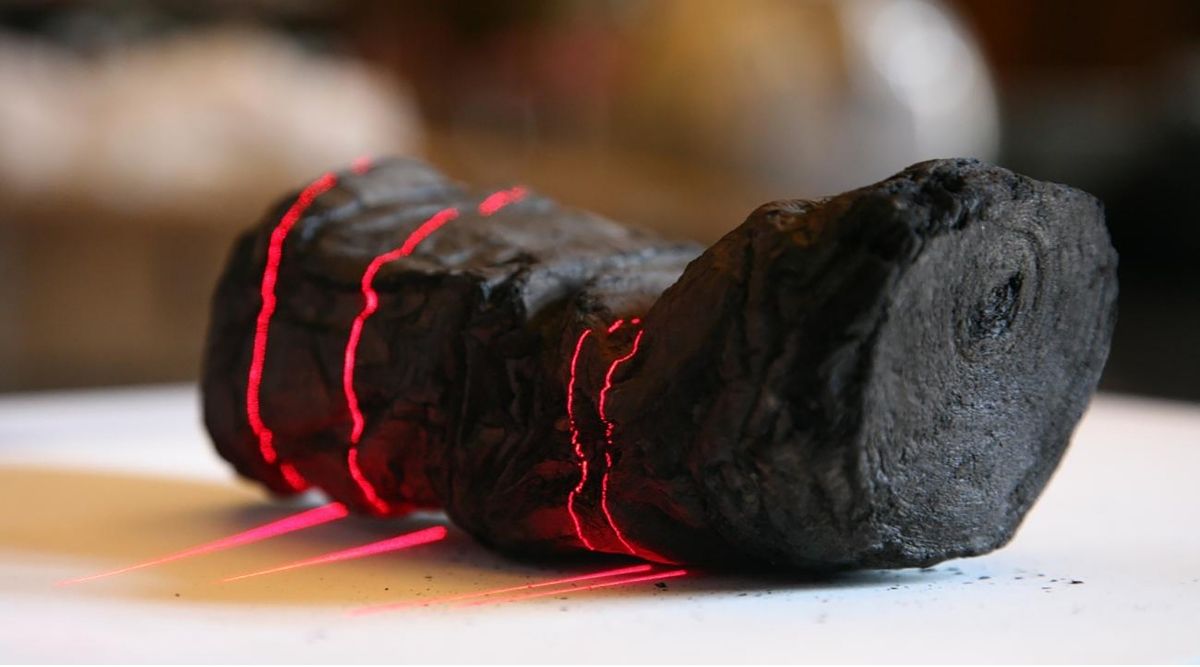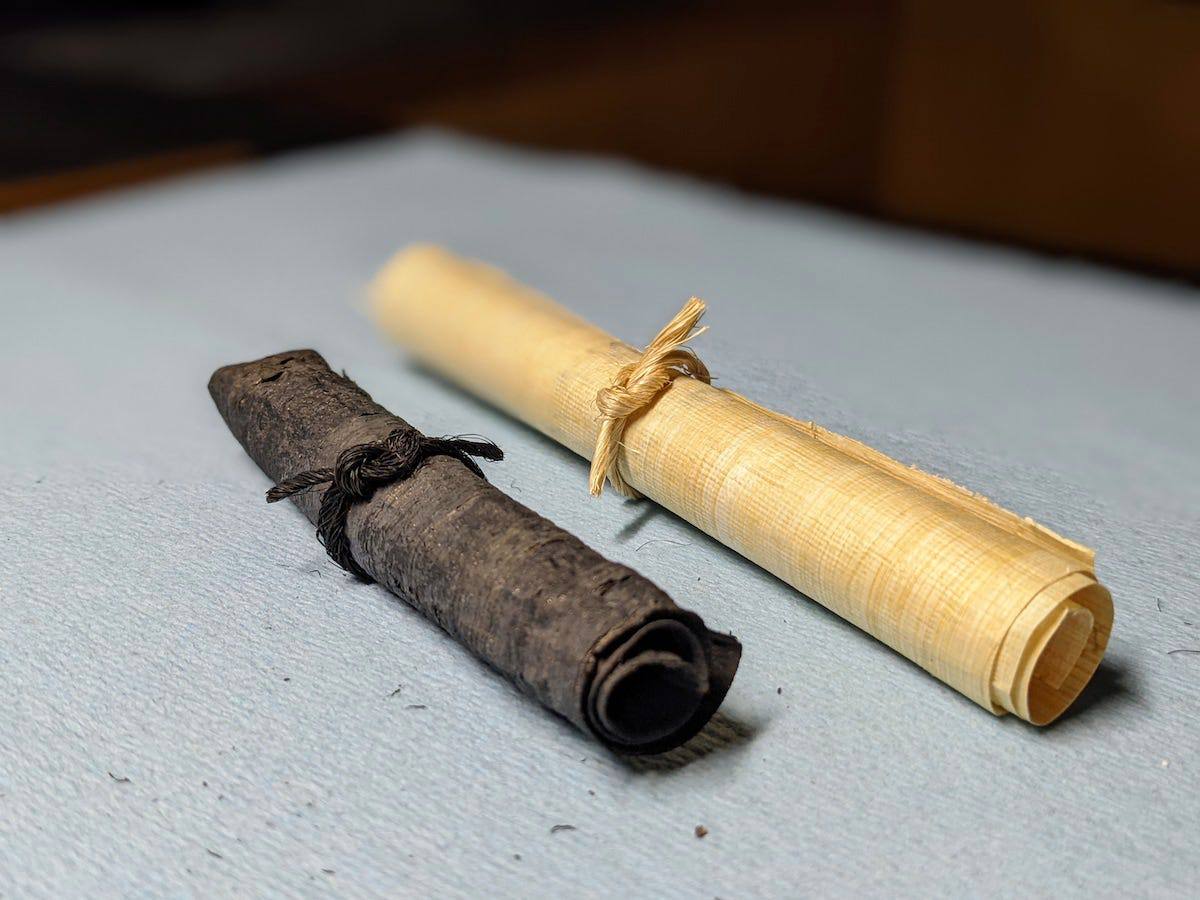AI made it possible to decode an ancient Greek word from a text damaged by Vesuvius’ eruption, marking a significant step in understanding the Herculaneum scrolls presumed lost to history. Credit: Vesuvius Challenge
AI read an ancient Greek word from a text damaged by Vesuvius in 79 AD, marking a major milestone in decoding the Herculaneum scrolls.
The Greek word ‘πορφύραc,’ which translates to “(Tyrian) purple” in English, carries a rich cultural connotation of royalty and influence. The Herculaneum scrolls, numbering more than 1,800, are believed to contain important philosophical and literary works of the first and second centuries BC. However, their charred and fragile state became a serious obstacle for the scientific community.
Nevertheless, recent advances in technology, especially the advent of artificial intelligence and advanced computing capabilities, have opened up opportunities for deciphering these relics.
Understanding the Greek word became possible due to a project, the Vesuvius Challenge, aimed at speeding up the decoding process. Led by a consortium of Silicon Valley researchers and investors, it encourages participants to understand the scrolls using advanced machine learning techniques.

The Vesuvius Challenge, initiated earlier this year, recently rewarded an American college student and an Egyptian graduate student in Germany. Luke Farritor and Youssef Nader got forty thousand and ten thousand dollars, respectively. They both independently identified the word “πορφύραc” from a single, well-preserved scroll fragment. Additionally, researchers have also revealed more letters from the aged manuscript.
The pursuit of the seven hundred thousand dollar grand prize continues as participants strive to reveal four significant passages from the scrolls by the end of 2023. Each passage must comprise a minimum of 140 readable characters.
The Herculaneum Scrolls

The Herculaneum Scrolls, discovered among the ruins of the ancient city of the same name near Pompeii in 1752, pose a serious challenge to historians. The fragile nature of these charred relics became a significant obstacle, leading to several failed attempts to read their contents. Innovative methods of physical extraction and careful disclosure undertaken in the 18th and 19th centuries resulted in irreparable damage to many of these priceless documents.
In addition, the scrolls’ carbon-based ink, indistinguishable to the human eye from charred papyrus, further complicated the decipherment process. However, through a combination of high-resolution scanning and a finely tuned machine learning model, the researchers were able to discern subtle differences in the interaction of ink with papyrus fibers, providing the ability to detect hidden texts.
The Vesuvius Challenge team released numerous 3D X-ray images of two rolled scrolls and three papyrus fragments. Additionally, they introduced an AI program tailored to interpret characters in the scrolls, utilizing subtle alterations caused by ancient ink on the papyrus’s composition.
The sealed scrolls are a part of the Institut de France’s collection in Paris. They represent a subset from the villa’s library, possibly owned by the prominent Roman figure Lucius Calpurnius Piso Caesoninus, Julius Caesar’s father-in-law.

